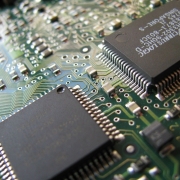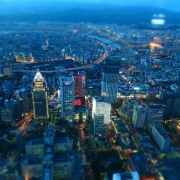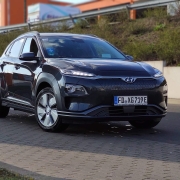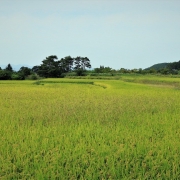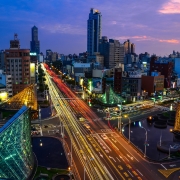What does Daewoo do?
Paper 1: Understanding the Global Economy (1945-2000)
Section B: Essay Writing
Theme II Chapter 3: Rise of Asian Tigers from 1970s to 1990s [South Korea and Taiwan]
Background
Daewoo (대우) refers to the ‘Great Universe’. On 22 March 1967, the Daewoo Group was founded by Kim Woo-Choong. Kim was the son of a provincial governor. Notably, Kim’s father used to teach Park Chung-hee, who later became South Korea’s authoritarian leader.
In the late 1960s, Kim relied on government loans to develop export-driven industries. His access to government loans was made possible with the Second Five-Year Plan from 1967 to 1971, which targeted export-oriented production. Within this period, the South Korean economy experienced an average growth rate of 9.6%. Also, the share of manufacturing in exports rose from 60 to 70%.
Diversification
At the early stages, he focused on the production of clothing and textiles, given the country’s sizable and affordable labour supply. Before 1972, Daewoo focused on its core business by purchasing three businesses, two textile producers and one leather processor.
In the 1970s, Daewoo moved to new areas, such as the production of cars, ships and oil rigs, which aligned with General Park Chung-hee’s plan to promote heavy and chemical industrialisation under the third Five-Year Plan from 1972.
By mid-1970s, Daewoo catapulted to economic success. Barely eight years after the company was established, Daewoo’s exported exceeded $300 million, which was equivalent to more than 4% of South Korea’s combined exports. In 1975, Daewoo owned 23 companies, 30 overseas branches and employed 35,000 workers.
Daewoo was originally a textile firm but also ended up making electronic goods, cars, and ships, in accordance with subsequent government economic plans. In fact, Kim entered the shipbuilding business against his will – Park forced him to do it. Daewoo Shipbuilding & Marine Engineering Ltd. now generates annual revenues of well over U.S. $10 billion.
An excerpt taken from “Korea: The Impossible Country: South Korea’s Amazing Rise from the Ashes: The Inside Story of an Economic, Political and Cultural Phenomenon” by Daniel Tudor.
Case Study: Daewoo Electronics
It can be observed that the founder Kim embarked on diversification to expand his business plans. One such example is Daewoo Electronics, which was formed in 1971, which began its first step by assembling radios and amplifiers. Two years later, a large-scale plant was set up in Kumi, enabling its to make its mark in Korea as one of the key electronics producers.
Daewoo Electronics’ growth acquired several firms. It acquired Joo-Ahn Electronics in 1975 and Dae-Han Electronics in 1983; the former allowed Daewoo to become a major producer of radios, while the latter became a core of its consumer electronics production. […]
Later, it supplied amplifiers to Germany’s Telefunken and Zenith of the USA. By 1982, Daewoo diversified itself as a comprehensive consumer electronics maker, exporting televisions, VCRs, cassette recorders, car stereos, refrigerators and washers.
An excerpt taken from “Technology Transfer and International Production: The Development of the Electronic Industry in Korea” by Jin W. Cyhn.
Daewoo Electronics’ success could be traced to its strategy of focusing on Original Equipment Manufacturing (OEM). In 1981, the Japanese multinational company, also known as the Nippon Electric Company (NEC), approached Daewoo Electronics to iron out plans for an OEM arrangement. The Korean chaebol was identified as a viable organisation, given its capacity for large-scale production.
Daewoo Electronics benefited from its contract manufacturing role with Japan’s NEC in terms of technological learning. The NEC engineers facilitated the transfer of technology through various forms of interactions. For instance, Daewoo engineers were advised to used more accurate electronic measuring devices by their Japanese counterparts.
A crumbling empire?
However, Daewoo’s economic track record was blemished by financial mismanagement, which surfaced in the wake of the 1997 Asian Financial Crisis. By the end of 1997, the Korean conglomerate accumulated a debt that was five times its equity. By 1999, Daewoo racked up debts of about US$50 billion.
The fall of Daewoo will undoubtedly be seen as an important event in Korea’s postwar economic history. The government did not altogether avoid support for the firm, since debt was rolled over and some core firms were not liquidated. Moreover, in September and October, the government was forced to establish massive funds to support the investment trust companies, which were big purchasers of Daewoo bonds.
An excerpt taken from “Resolution of Financial Distress: An International Perspective on the Design of Bankruptcy Laws” by Simeon Djankov, Constantijn A. Claessens amd Ashoka Mody.
What can we learn from this article?
Consider the following question:
– Assess the view that the economic transformation of South Korea between 1970 and 1990 was exaggerated.
Join our JC History Tuition to learn more about the Global Economy and the Asian Tiger economies. The H2 and H1 History Tuition feature online discussion and writing practices to enhance your knowledge application skills. Get useful study notes and clarify your doubts on the subject with the tutor. You can also follow our Telegram Channel to get useful updates.
We have other JC tuition classes, such as JC Math Tuition and JC Chemistry Tuition. For Secondary Tuition, we provide Secondary English Tuition, Secondary Math tuition, Secondary Chemistry Tuition, Social Studies Tuition, Geography, History Tuition and Secondary Economics Tuition. For Primary Tuition, we have Primary English, Math and Science Tuition. Call 9658 5789 to find out more.




